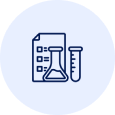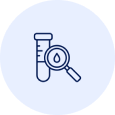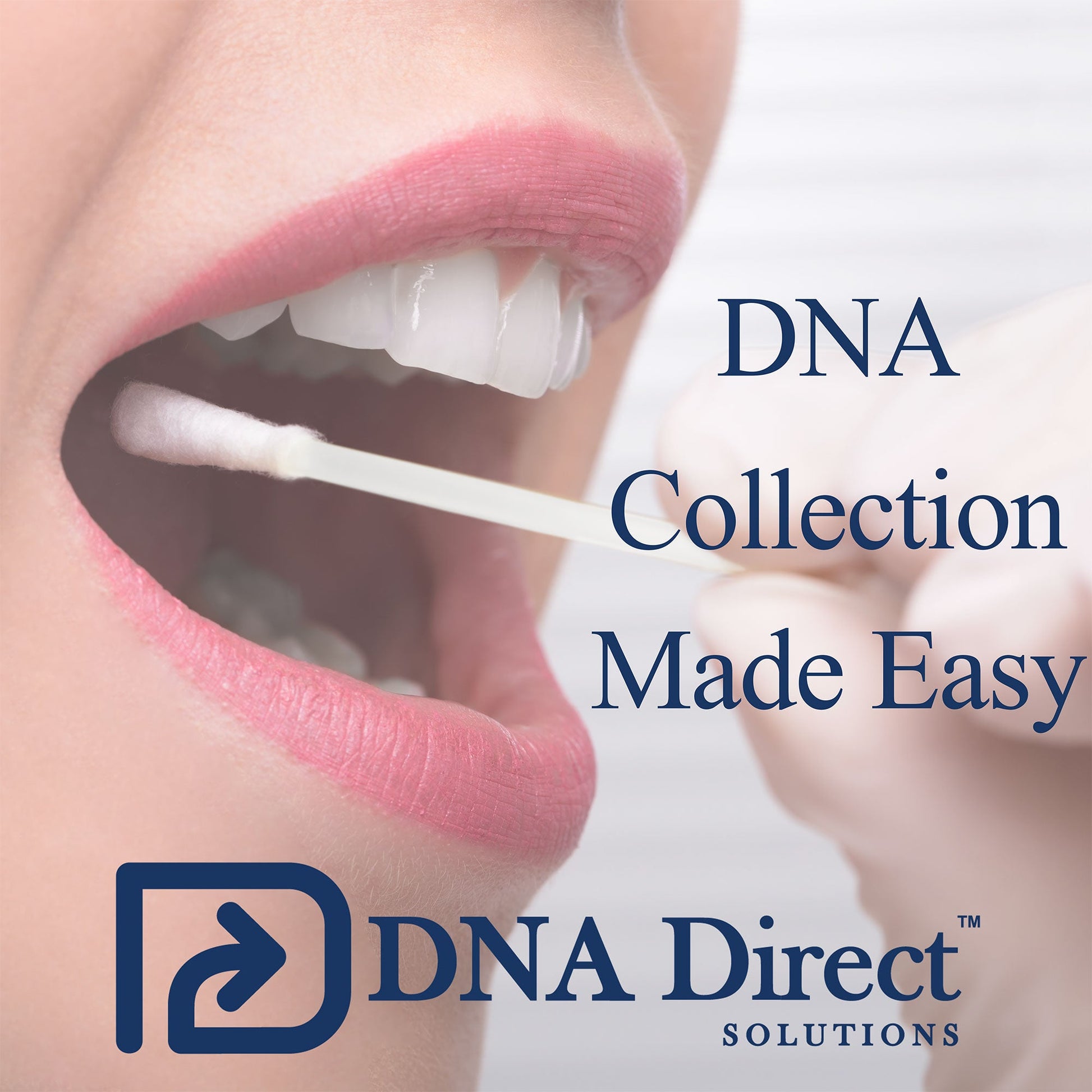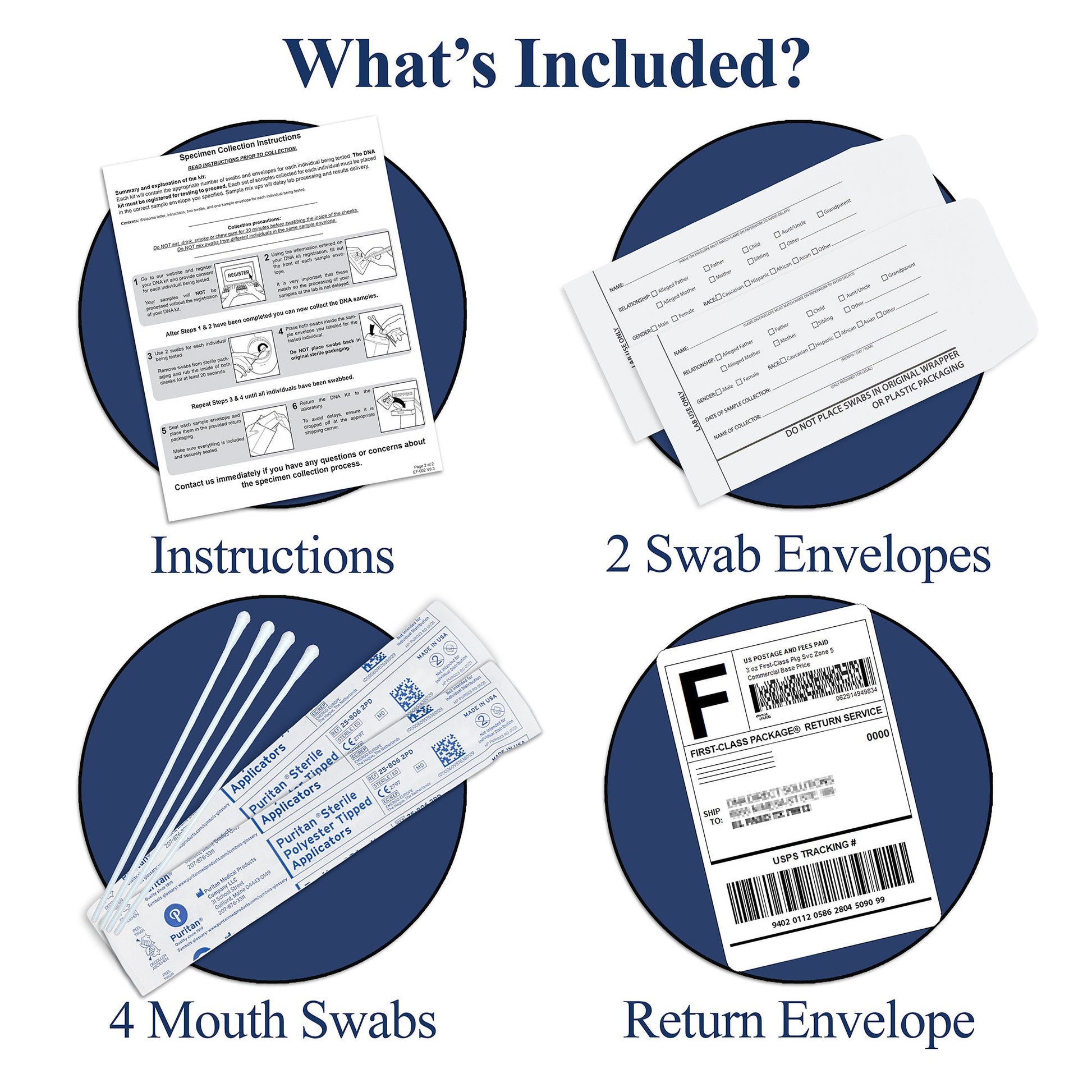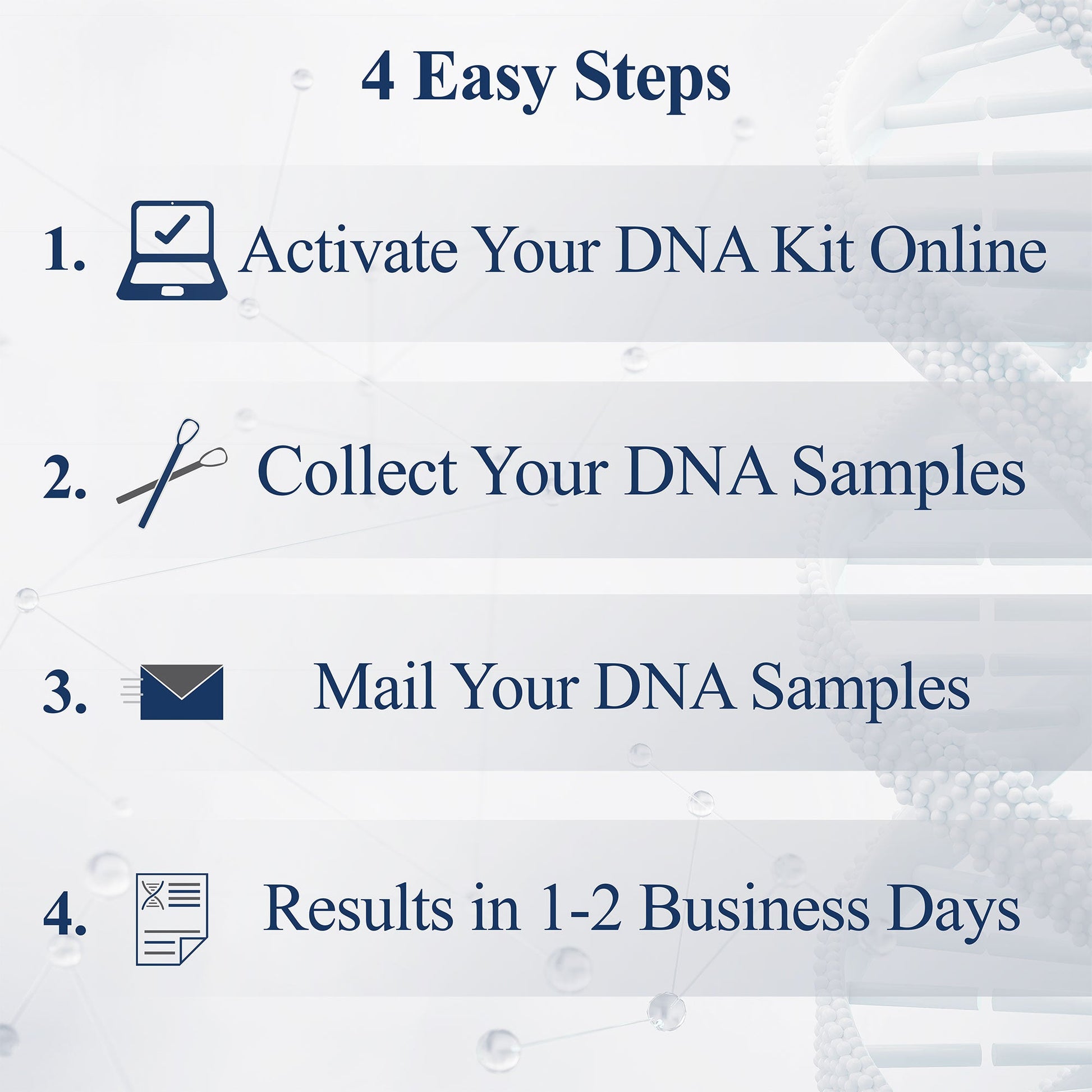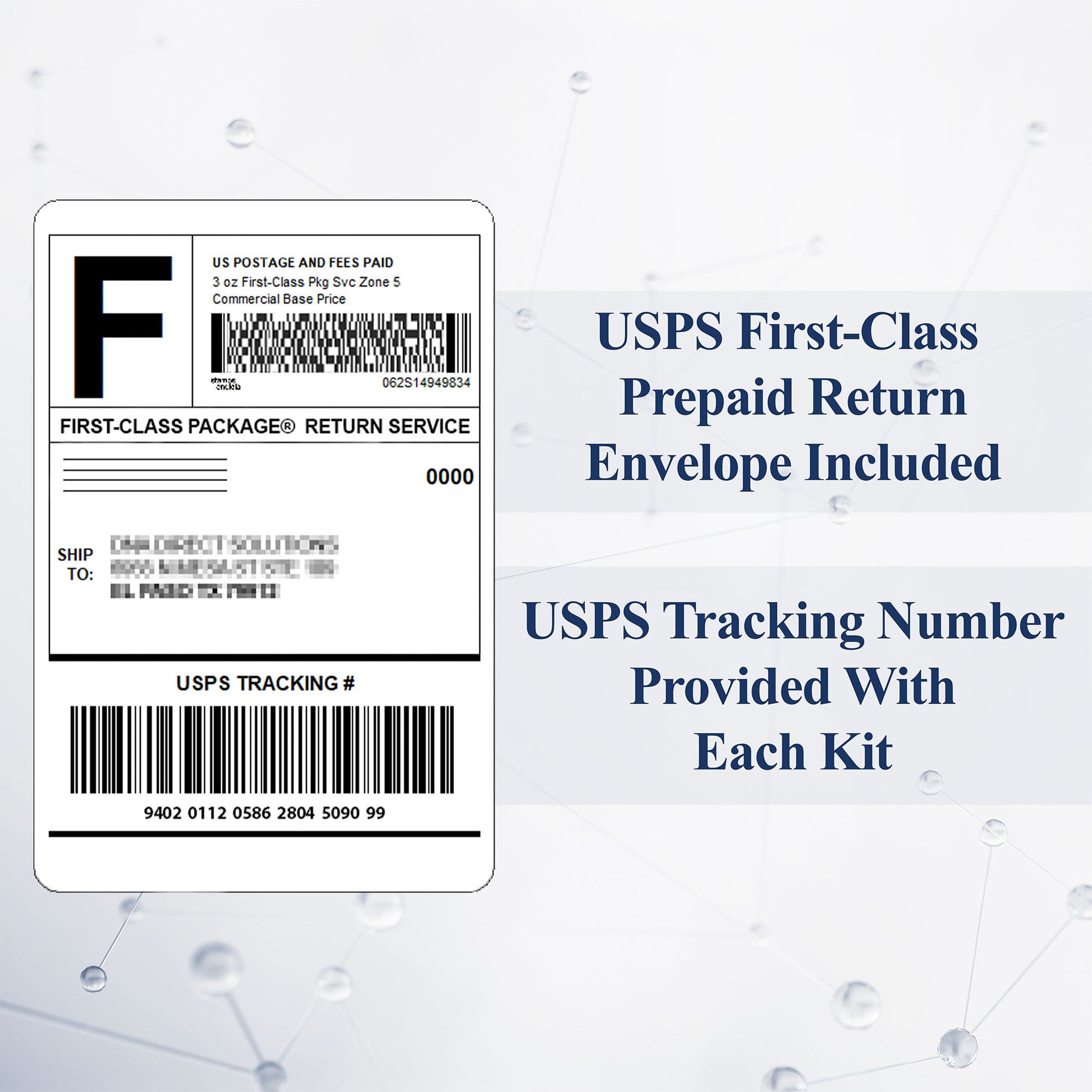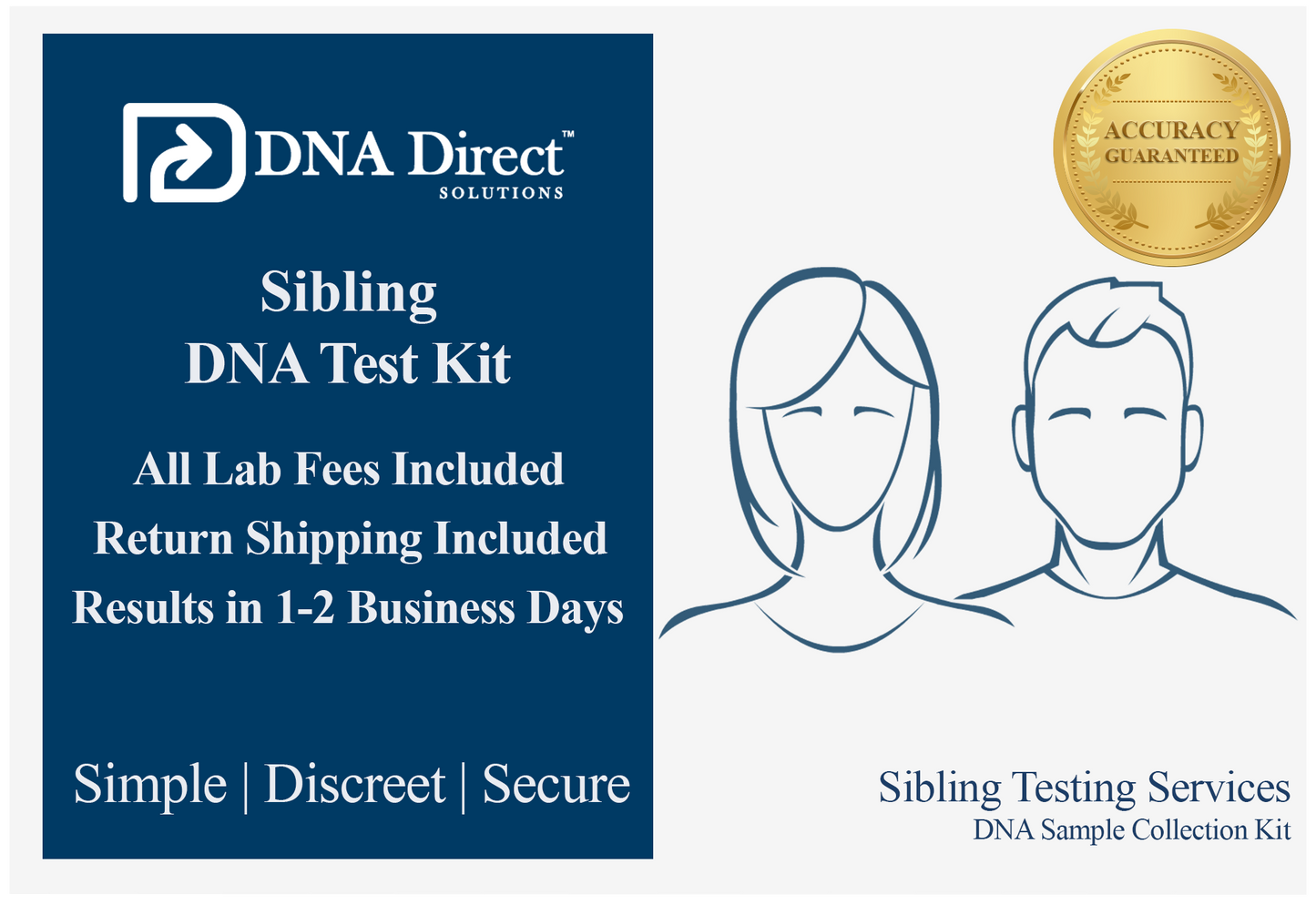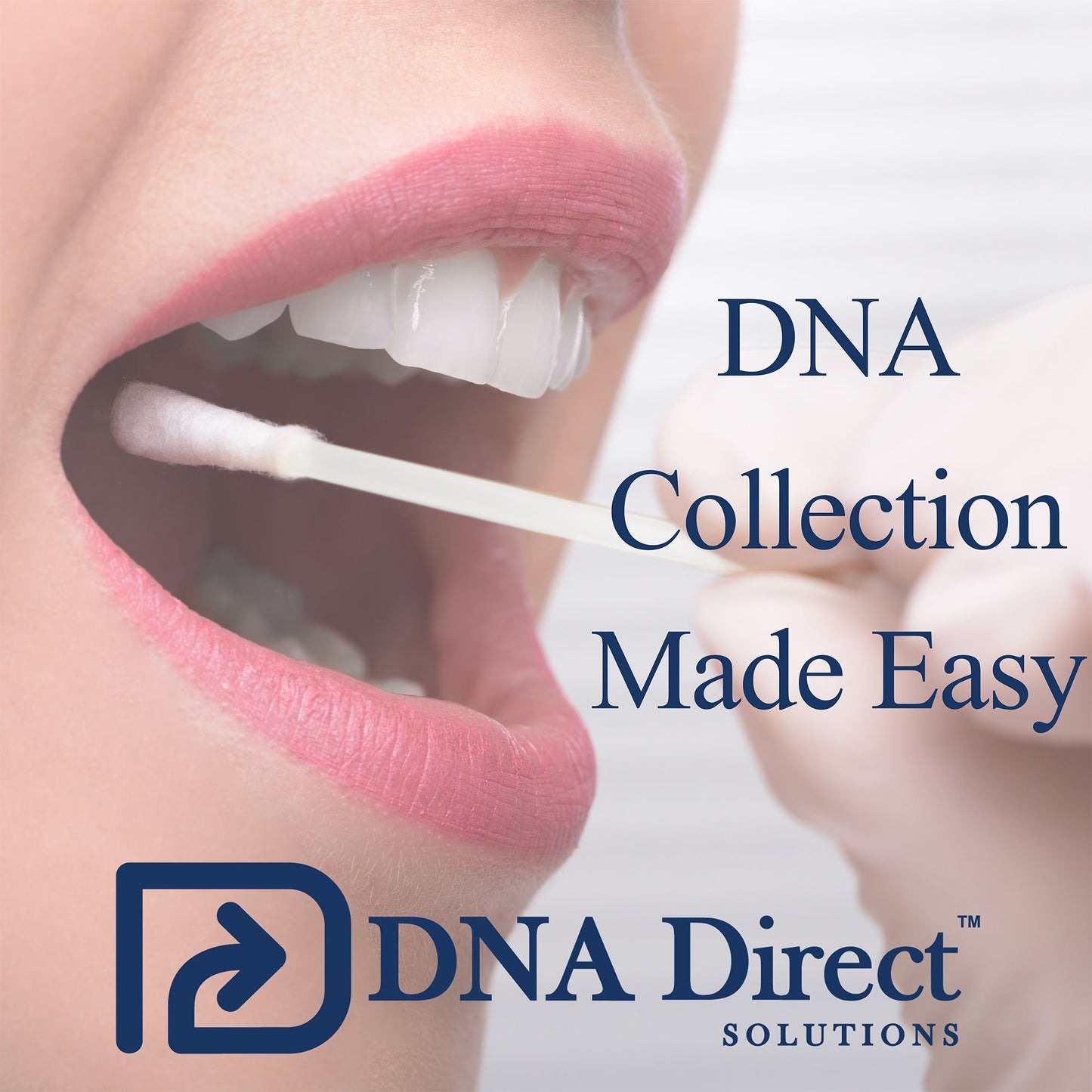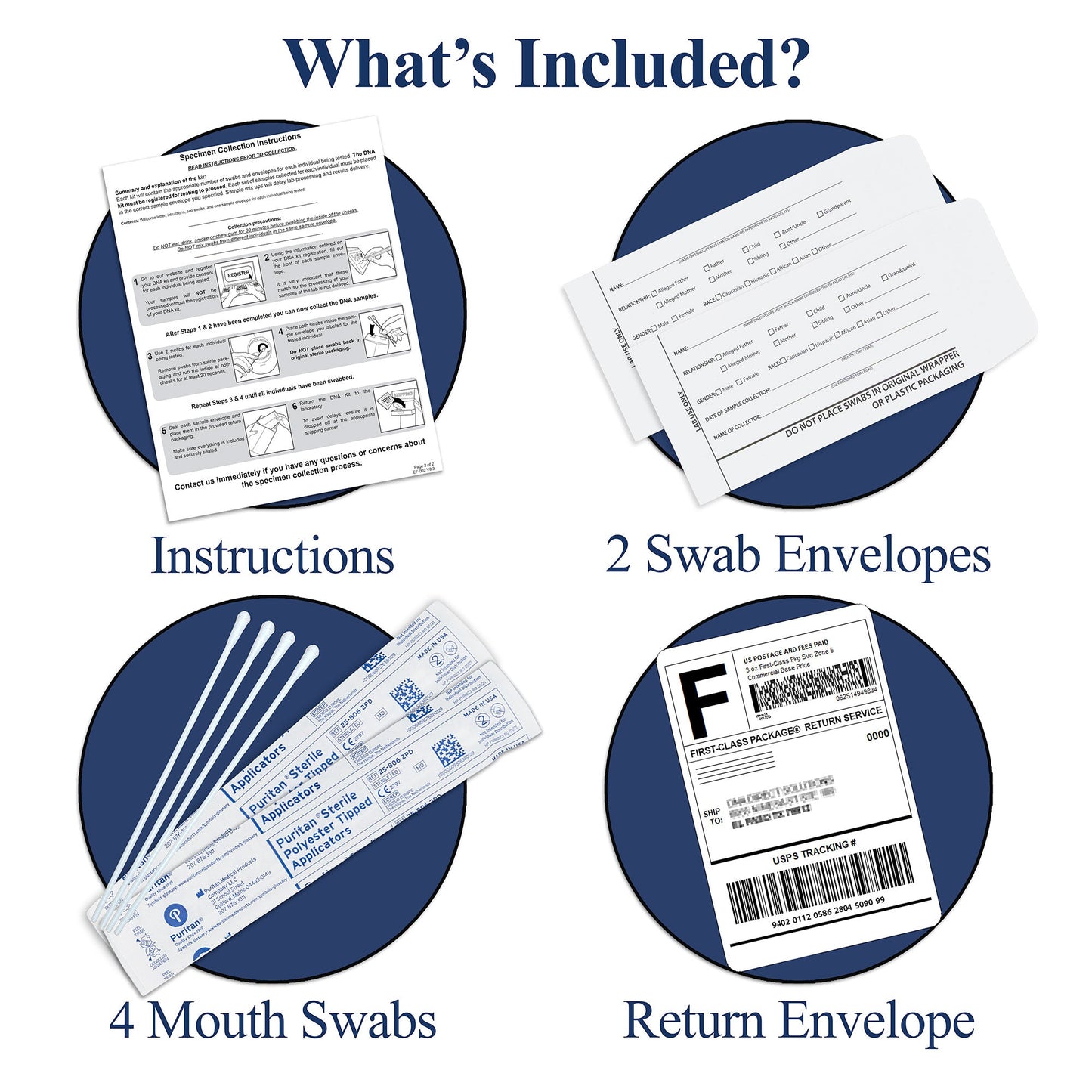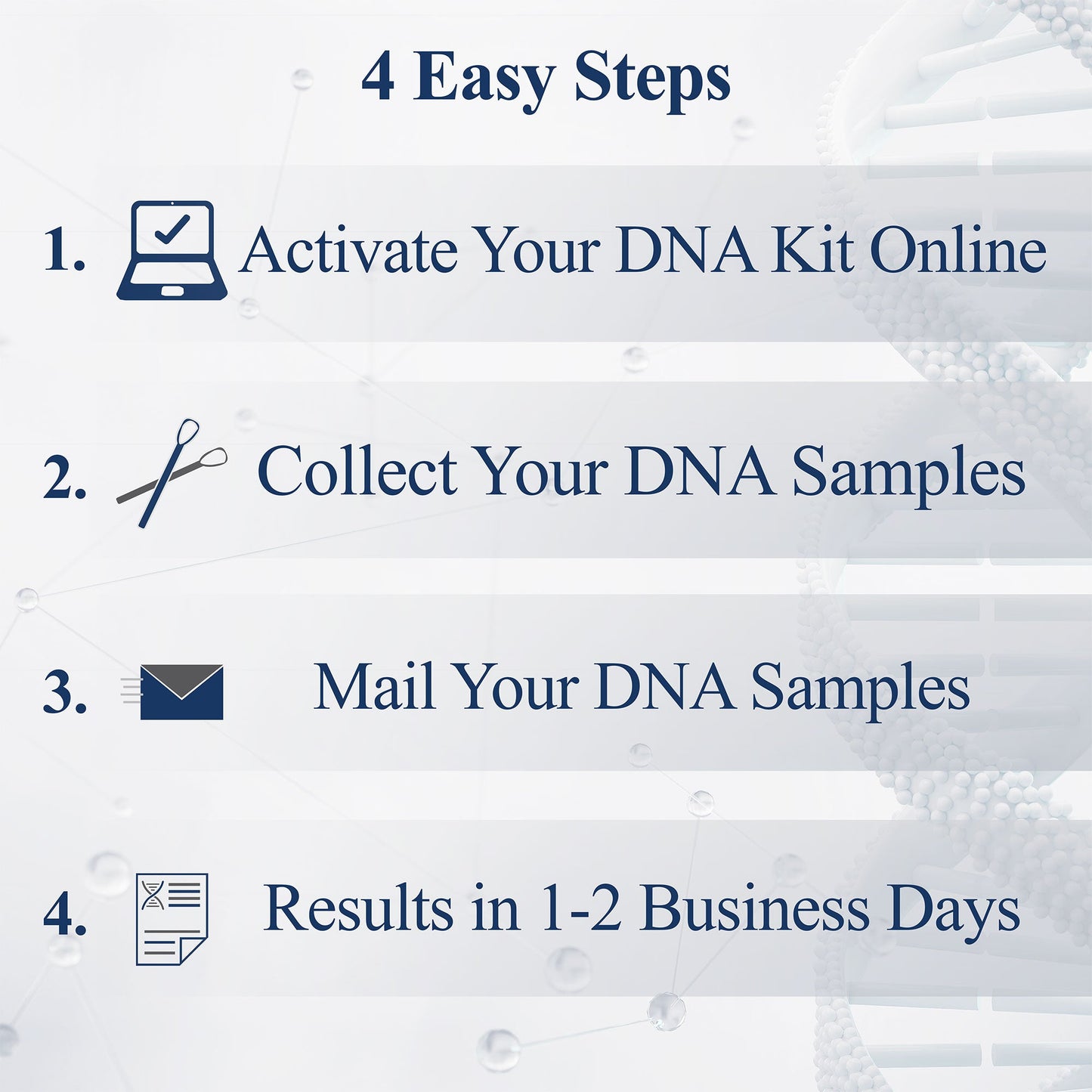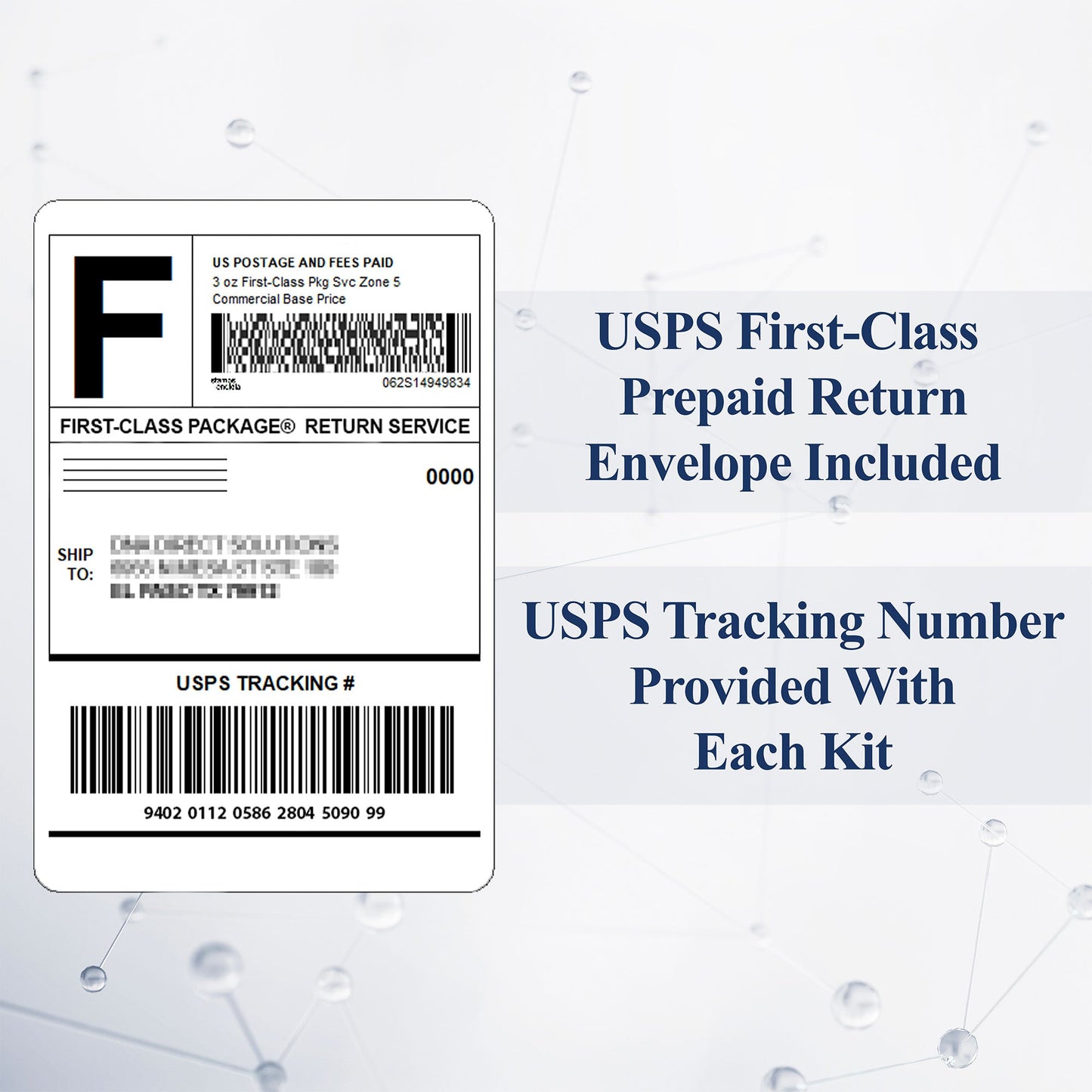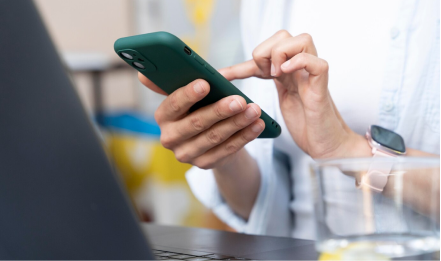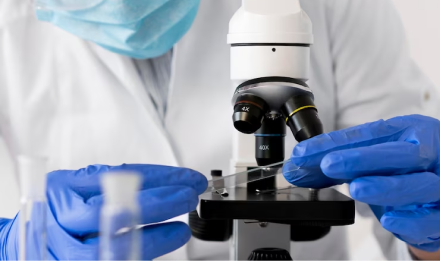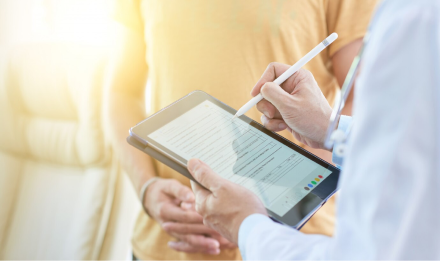All testing performed by an accredited laboratory.
DNA Direct offers confidential, accurate, fast, and affordable siblingship testing services.
A DNA siblinghip analysis compares the DNA of one person to that of another to determine the likelihood that they are related biologically as siblings.
This DNA test calculates the statistical likelihood that siblings share the same two parents, one parent, or no parent at all. When siblingship is in question, the recommended method of analysis is to test their parents. When the alleged parents are unavailable for testing, a DNA siblingship test can be performed. Including one common parent greatly increases the accuracy of this type of analysis and is recommended, if at all possible.
Siblingship test results are best related in terms of probability and can fall anywhere between 0% and 99.99%. The higher the percentage, the more likely the tested individuals are related, however, in some cases siblingship results may be inconclusive.
Two individuals who share both biological parents in common are called full siblings, whereas two individuals who share only one biological parent in common are called half siblings. On average, full siblings share 50% of their genes due to common inheritance, whereas half siblings share 25%. There are 3 different types of statistical analyses that can be performed for DNA sibling tests, which are based on the particular parental relationship(s) in question:
-
Full Siblings vs. Unrelated. In these sibling tests, the DNA of two individuals is compared to determine the likelihood that they have the same biological mother and father, versus being completely unrelated.
-
Full Siblings vs. Half Siblings. In these sibling tests, the DNA of two individuals with the same biological mother is compared to determine the likelihood that they have the same biological father. For these tests, we recommend that samples from the biological mother be tested. This addition greatly increases the conclusiveness of the test.
-
Half Siblings vs. Unrelated. In these sibling tests, the DNA of two individuals with different biological mothers is compared to determine the likelihood that they have the same biological father. For these tests, we recommend that samples from one—and preferably both—biological mothers be tested. This addition greatly increases the conclusiveness of the test.
It is important to understand that, unlike a traditional paternity test, it is not always possible to obtain a conclusive result in a DNA siblingship test. This is, in part, because the pattern of inheritance and degree of sharing of genetic markers between two siblings are not the same as that between a parent and child. In a sibling DNA test, the degree of certainty that can be achieved depends upon who is available for testing as well as the specific type of sibling relationship being tested. As a general rule, the more genetic information available, the greater the chance the test will be conclusive.
We understand your need for results to remain confidential. Once testing is complete, we will only send results to the email address you provide when the order is placed. We will not issue results over the phone.
THE ANSWERS ARE ONLY DAYS AWAY.
A DNA collection kit by default comes with supplies for two individuals: 1 welcome letter with DNA kit activation instructions, 1 set of sample collection instructions, 4 buccal (mouth) swabs, 2 sample envelopes, and a polymailer envelope with a United States use ONLY prepaid return label.
Additional supplies will be included if additional individuals are being tested.
NOTE: The DNA Collection Kit for our Infidelity DNA Test contains sample collection instructions with pricing, 2 buccal (mouth) swabs for 1 reference sample, and does not include a prepaid return label or envelope.
STEP 1 - Activate your DNA kit by visiting the "Activate DNA Kit" link in the main menu. The email address you provide is the email address we will use to communicate with you and send the results to. Infidelity and Semen Detection kits do not need to be activated.
STEP 2 - Carefully follow the sample collection instructions, be sure to put the correct buccal swabs in the correct sample envelopes, and seal them.
STEP 3 - Place your sealed sample envelopes in the return polymailer and return your DNA kit to the laboratory. Be sure to check the prepaid return label for where to drop it off. It is also a good idea to write down the tracking number.
STEP 4 - When the laboratory receives your returned DNA kit they will thoroughly inspect it and confirm it has been activated. After that we will notify you by email it has been received and follow up with you in 1 to 2 business days with the results of your DNA test.
NOTE: If there are any issues with your DNA kit or the laboratory analysis, we will notify you immediately.

